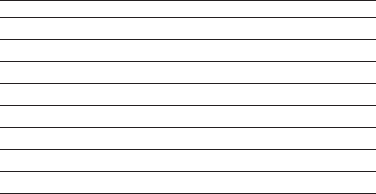
Other convenient clamps such as spring, bar or C-
clamps may be appropriate for certain sizes and shapes
of workpieces. Use care in selecting and placing these
clamps and make a dry run before making the cut.
Support for Long Pieces
Turn Off and Unplug Saw
ALWAYS SUPPORT LONG PIECES
For best results, use an extension work support to
extend the table width of your saw. Support long work-
pieces using any convenient means such as sawhorses
or similar devices to keep the ends from dropping.
Cutting Picture Frames, and Other Four Sided
Projects
To best understand how to make the items listed here,
we suggest that you try a few simple projects using
scrap wood until you develop a “FEEL” for your saw.
Your saw is the perfect tool for mitering corners like the
ones shown in Figure 8, which shows a joint made by
setting the miter arm at 45 degrees to to miter the two
boards to form a 90 degree corner. To make this type of
joint, set the miter arm to 45 degrees. The wood was
positioned with the broad flat side against the table and
the narrow edge against the fence.
As the number of sides changes, so do the miter
angles. The chart below gives the proper angles for a
variety of shapes.
(The chart assumes that all sides are of equal length.)
For a shape that is not shown in the chart, use the
following formula. 180 degrees divided by the number
of sides equals the miter.
- Examples -
No. Sides Angle Miter
4 45°
5 36°
6 30°
7 25.7°
8 22.5°
9 20°
10 18°
Cutting Compound Miters
A compound miter is a cut made using a miter angle
and a bevel angle at the same time. This is the type of
cut used to make frames or boxes with slanting sides
like the one shown in Figure 8.
NOTE: If the cutting angle varies from cut to cut, check
that the bevel clamp knob (10) and the miter clamp
handle (4) are securely tightened. These knobs must
be tightened after making any changes in bevel or
miter.
Cutting Crown Molding
In order to fit properly, crown molding must be mitered
with extreme accuracy. The two flat surfaces on a given
piece of crown molding are at angles that, when added
together, equal exactly 90 degrees. Most, but not all,
crown molding has a top rear angle (the section that fits
flat against the ceiling) of 52 degrees and a bottom rear
angle (the part that fits flat against the wall) of 38
degrees.
Pretesting with scrap material is extremely important!
Place the bottom side (the side that will be against the
wall) against the Miter SAW FENCE. Place the top (that
part that will be against the ceiling) against the saw
table and the crown molding fence.
Instructions for cutting crown MOLDING angled
between the fence and the TABLE of the saw for all
cuts:
1. Angle the molding so the bottom of the molding (part
which goes against the wall when installed) is against
the fence and the top of the molding is resting on the
table of the saw.
2. The angled “flats” on the back of the molding must
rest squarely on the fence and table of the saw.
INSIDE CORNER:
Left side
1. Miter right at 45°
2. Save the right side of cut
Right side
1. Miter left at 45°
2. Save left side of cut
OUTSIDE CORNER:
Left side
1. Miter left at 45°
2. Save the right side of cut
Right side
1. Miter right at 45°
2. Save left side of cut
ALWAYS MAKE DRY RUNS TO CHECK FOR CLEAR-
ANCE AND CORRECTNESS OF CUTS.


















